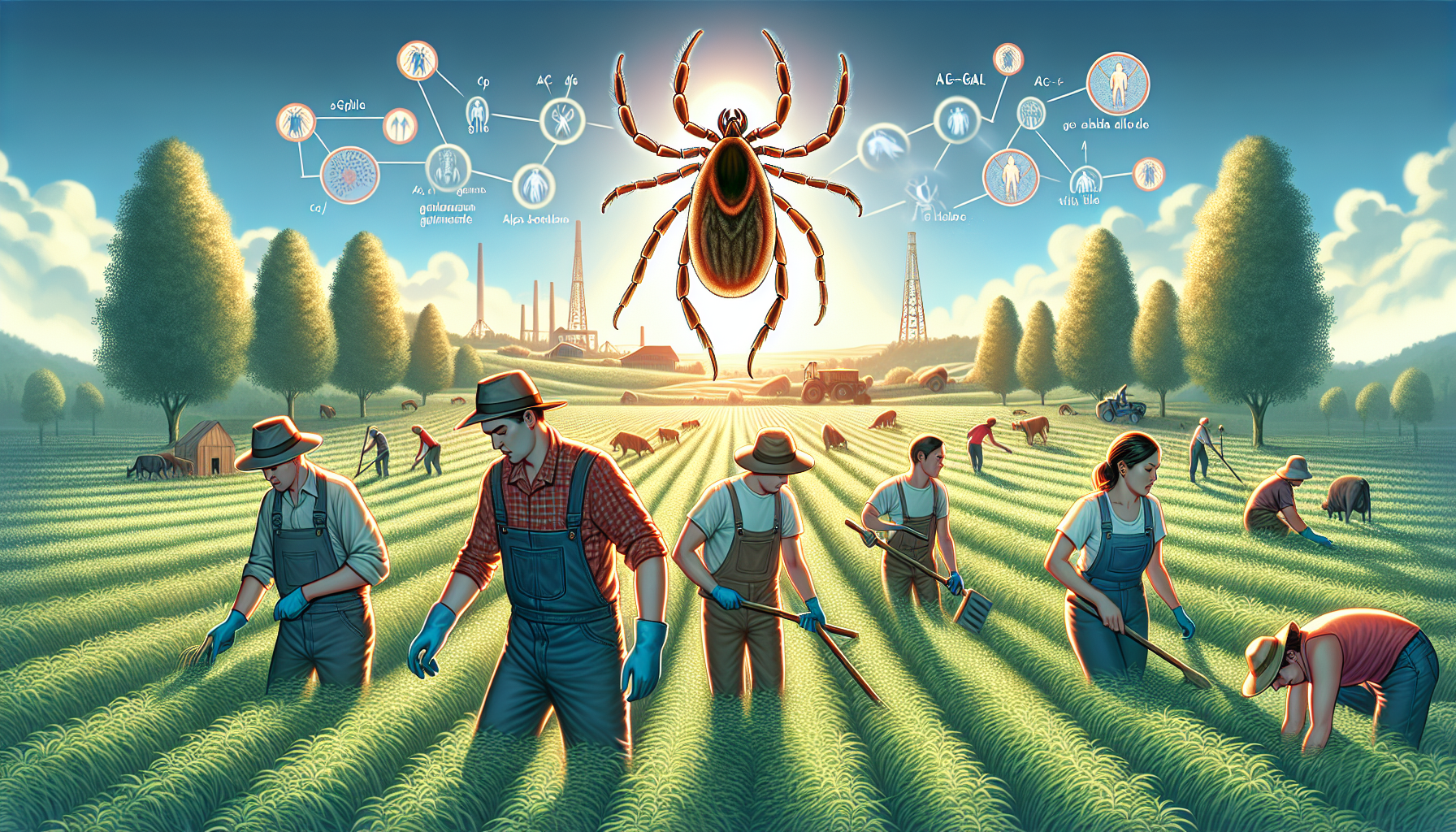Title: Unraveling the Increasing Threat of Alpha-Gal Syndrome for Farmers
In recent years, allergies have taken a surprising turn, reaching deep into the heart of rural farming communities. The unsuspecting culprit? The saliva of the lone-star tick, leaving a trail of bewildered and afflicted farmers in its wake. This silent, persistent threat has birthed an allergy known as Alpha-Gal Syndrome (AGS), forcing many to reassess their relationship with the very animals they raise.
The Startling Story of Clark Giles
For Clark Giles, a dedicated sheep farmer from Oklahoma, the idea of ticks causing meat allergies once seemed ludicrous. His skepticism was shattered in 2022 when, after several tick bites, he found himself in the throes of a severe allergic reaction following a simple hamburger meal. His face swollen and skin flushed red, Giles was forced to abandon the staples of his diet—beef, pork, and even lamb.
Beyond dietary adjustments, the syndrome disrupted his everyday farm life. What once felt routine—like lambing season smells—now induced debilitating symptoms including brain fog and fatigue. Even the tactile act of tending to his sheep required precautions like wearing nitrile gloves and using a respirator.
The Expanding Reach of Lone-Star Ticks
Once confined to the southeastern United States, the lone-star tick is now extending its reach northward and westward, with Oklahoma sitting on the fringe of its expanded habitat. The state's farmers, frequently outdoors and thus exposed, are increasingly susceptible. Though precise numbers of affected farmers remain elusive, the syndrome's growing prevalence is undeniable.
Virginia, for instance, has already adapted. The state’s farm bureau now offers alpha-gal-safe meals, and high-profile figures, including agriculture officials, recount personal battles with AGS. Charles Green, Virginia's deputy commissioner of agriculture, attests to this shift, having developed the allergy at his own family farm.
Alpha-Gal Syndrome: Beyond Avoiding Meat
Avoiding mammalian meat often isn't enough for those deeply afflicted. To farmers like Giles, the syndrome means untangling from the very creatures they nurture. The presence of mammalian-derived products can provoke reactions, whether from inhaling animal dander or coming into contact with amniotic fluid, a potent AGS trigger documented among cattle workers.
This phenomenon is reshaping farms. In Kentucky, Sonya Bowes has been compelled to sell off livestock she can no longer safely manage. The lifestyle and livelihood she cherished are now fading, a deeply personal and financial blow.
Similarly, in Virginia, the Florences have scaled back their cattle operations. AGS’s reach is compounded by other tick-borne illnesses, making once-manageable farm tasks an ethical and health dilemma. Their story illustrates a broader existential question: Can traditional livestock farming coexist with the rising health risks posed by ticks?
The Future of Farming with AGS
With AGS under-recognized even within healthcare, its true reach is shrouded. Yet, as the lone-star tick advances, more individuals may find themselves at odds with customary meat consumption. Still, some farmers are pivoting towards alternatives such as poultry and even emu and ostrich farming—red meats that are surprisingly compatible with AGS.
Despite the humor in such adaptations, the threat looms large, prompting many to reconsider personal safety and sustainable farming practices. For now, vigilance against tick exposure remains a shared priority within these agricultural communities.
Adapting to these changes is vital for the survival of traditional farming. Stories like those of Clark Giles and the Florences remind us of the intricacies of our ecosystems and the unexpected turns that the natural world can take, challenging us to rethink our agriculture and health strategies for the future.


